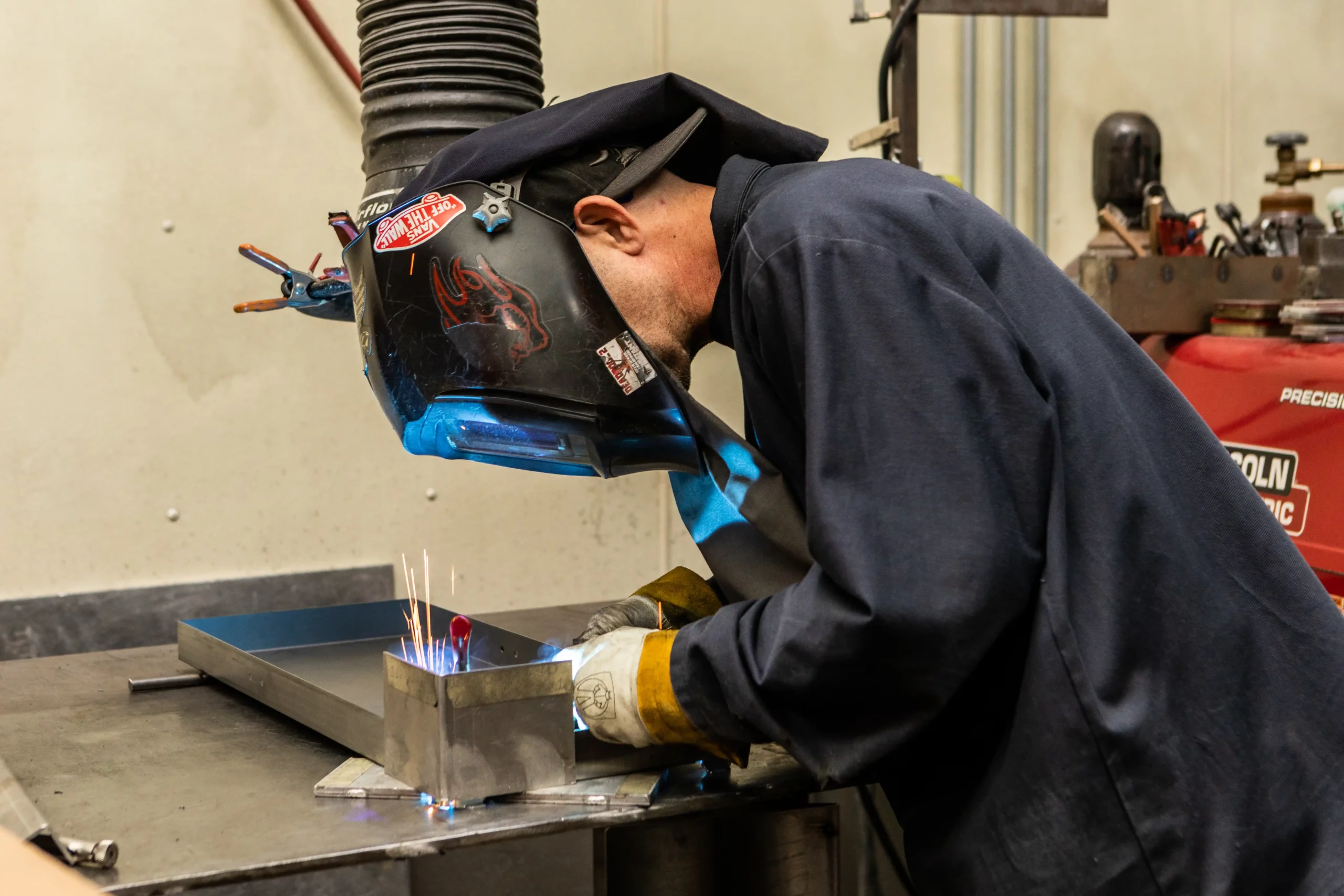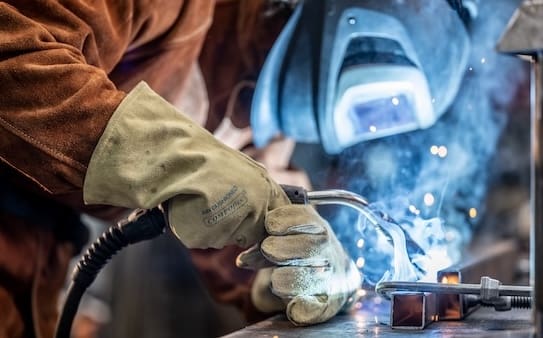Everything about Welding: Key Insights Into Techniques and Best Practices for Success
Welding includes a range of methods, each matched for details products and applications. Understanding these approaches, such as GMAW, SMAW, and TIG, is vital for attaining suitable outcomes. The ideal devices and safety practices can not be forgotten. As preparation and troubleshooting play critical roles in the welding process, mastering these aspects can greatly improve the top quality of the end product. What are the essential variables that assure a successful weld?
Understanding Different Welding Methods
Welding methods encompass a variety of methods, each fit to certain applications and products. Among the most usual methods are Gas Steel Arc Welding (GMAW), Protected Metal Arc Welding (SMAW), and Tungsten Inert Gas Welding (TIG) GMAW, also known as MIG welding, is popular for its speed and adaptability, making it optimal for thin materials. SMAW, or stick welding, is favored for its simplicity and effectiveness in outdoor settings, particularly with thicker steels. TIG welding offers accuracy and control, making it suitable for intricate job and non-ferrous metals (Montana Mobile Welding and Repair). Each technique has its distinct benefits and considerations, allowing welders to select the ideal method based on the task's demands, product kind, and preferred end results. Comprehending these techniques is important for successful welding
Crucial Welding Tools and Tools
While various welding strategies call for details abilities, the right tools and devices are similarly necessary for achieving top quality results. Important welding equipment includes welding equipments, which vary depending on the strategy-- such as MIG, TIG, or stick welding. Protective gear, consisting of handwear covers, headgears, and aprons, warranties security and comfort throughout the procedure. On top of that, components and clamps aid safeguard products in area, ensuring accuracy in welds. Consumables like welding poles, cable, and securing gas are also essential elements that affect the top quality of the weld. In addition, devices such as grinders and cutters assist in surface prep work and post-weld ending up, contributing to a professional outcome. Buying premium devices inevitably improves the effectiveness and efficiency of welding projects.
Safety Practices in Welding
Correct safety and security practices are important in the welding market to protect employees from prospective hazards. Welders need to put on suitable personal protective devices (PPE), including safety helmets with correct shading, handwear covers, and flame-resistant clothing. Sufficient air flow is vital to lower direct exposure to dangerous fumes and gases generated during the welding procedure. Furthermore, workers need to be trained in the correct handling of welding tools to avoid crashes. Fire safety actions, such as keeping flammable products far from the welding area and having fire extinguishers conveniently offered, are required. Normal examinations of equipment and work spaces can help determine prospective dangers prior to they lead to mishaps. By sticking to these safety methods, welders can develop a more secure working environment and lessen dangers related to their profession.
Readying Materials for Welding
Preparing materials for welding is an essential step that considerably influences the high quality and integrity of the end product (Belgrade Fabrication). Correct prep work involves cleaning up the surfaces to remove impurities such as oil, rust, and dust, which can compromise the weld. Strategies such as grinding, fining sand, or utilizing solvents are frequently utilized to achieve a tidy surface. Additionally, making sure that the materials fit with each other snugly is necessary; spaces can bring about weak welds. It's additionally vital to think about the placement and positioning of the components, as this will certainly impact the ease of welding and the last result. Picking the suitable filler product and making sure compatibility with the base metals is important for attaining solid, resilient welds.
Tips for Getting High-Quality Welds
Accomplishing top quality welds calls for interest to information and adherence to best techniques throughout the welding process. Proper joint prep work is vital, ensuring surface areas are clean and free from pollutants. Picking the suitable filler product and welding technique based upon the base steels is crucial for excellent bonding. Keeping consistent traveling speed and angle while welding can advertise and stop flaws harmony. In addition, controlling heat input is necessary; extreme warm can bring about bending and weakened joints. If required, consistently examining the welds throughout the procedure enables for prompt adjustments. Lastly, employing suitable post-weld treatments, such as cleaning and stress and anxiety alleviation, can improve the longevity and stability of the weld, eventually making sure a successful result.
Fixing Usual Welding Issues
Welding commonly offers difficulties that can impact the high quality and honesty of the last product. Common problems such as porosity, inconsistent weld beads, and overheating can occur, each requiring details troubleshooting strategies. Comprehending these problems is important for welders to boost their abilities and attain suitable results.
Porosity Problems Described
Porosity can frequently be ignored, it remains an important concern in welding that can jeopardize the integrity of an ended up product. Porosity describes the presence of little gas pockets within the weld bead, which can lead and compromise the joint to early failure. This trouble usually develops from contaminants, wetness, or incorrect securing gas coverage during the welding procedure. To minimize porosity, welders should validate that the base products are clean and dry, use appropriate shielding gases, and preserve regular welding parameters. Consistently examining the devices and environment can likewise assist identify potential issues prior to they show up in the weld. Dealing with porosity effectively is vital for achieving solid, durable welds that meet quality standards.

Inconsistent Weld Beads
Irregular weld beads can greatly affect the quality and stamina of a completed item. Different variables add to this concern, consisting of incorrect travel rate, incorrect amperage settings, and inconsistent electrode angles. When the welder relocates as well promptly, a bead may show up slim and lack penetration, while relocating as well gradually can cause too much buildup. Additionally, utilizing the wrong amperage can cause either undercutting or extreme other spatter, both of which concession weld stability. The welder's method, such as inconsistent lantern movement, can additionally result in unequal bead appearance. To alleviate these issues, welders need to concentrate on maintaining stable, regulated motions and ensuring proper equipment setups to attain uniformity in their welds. Consistency is crucial to achieving solid and reputable welds.
Getting Too Hot and Warping Issues
Extreme warm during the welding process can lead to significant overheating and warping concerns, affecting the structural integrity of the workpiece. These troubles often materialize as distortion, which can endanger positioning and fit-up, making more setting up testing. Variables adding to overheating consist of the selection of welding specifications, such as voltage and travel speed, in addition to the sort of product being bonded. To mitigate these problems, welders must preserve constant traveling speed and suitable warmth input while keeping track of the workpiece temperature level. Furthermore, pre-heating or post-weld warmth therapy can assist minimize stresses brought on by rapid air conditioning - Montana Mobile Welding and Repair Belgrade. Regular assessment and adherence to best practices are vital in protecting against getting too hot and ensuring the long life and reliability of bonded structures
Regularly Asked Inquiries
What Are the Occupation Opportunities in the Welding Market?
The welding sector uses varied career possibilities, including placements as welders, designers, educators, and examiners. Professionals can operate in manufacturing, construction, aerospace, and automotive markets, gaining from strong demand and competitive salaries in different duties.
Exactly How Can I Improve My Welding Speed Without Compromising High Quality?
To boost welding speed without giving up top quality, one need to exercise efficient methods, preserve devices, enhance settings, and improve hand-eye sychronisation. Routine training and looking for responses can also significantly contribute to accomplishing much faster, high-quality welds.
What Qualifications Are Readily Available for Welders?
Countless qualifications exist for welders, consisting of those from the American Welding Society (AWS), the National Center for Construction Education and Research (NCCER), and numerous industry-specific organizations. These qualifications boost employability and demonstrate ability effectiveness.
Just How Does Welding Affect the Characteristics of Metals?
Welding influences the buildings of steels by modifying their microstructure, which can cause modifications in ductility, solidity, and stamina. Warmth input and air conditioning prices throughout the procedure substantially influence these material features.
Can I Weld Dissimilar Metals With Each Other?
